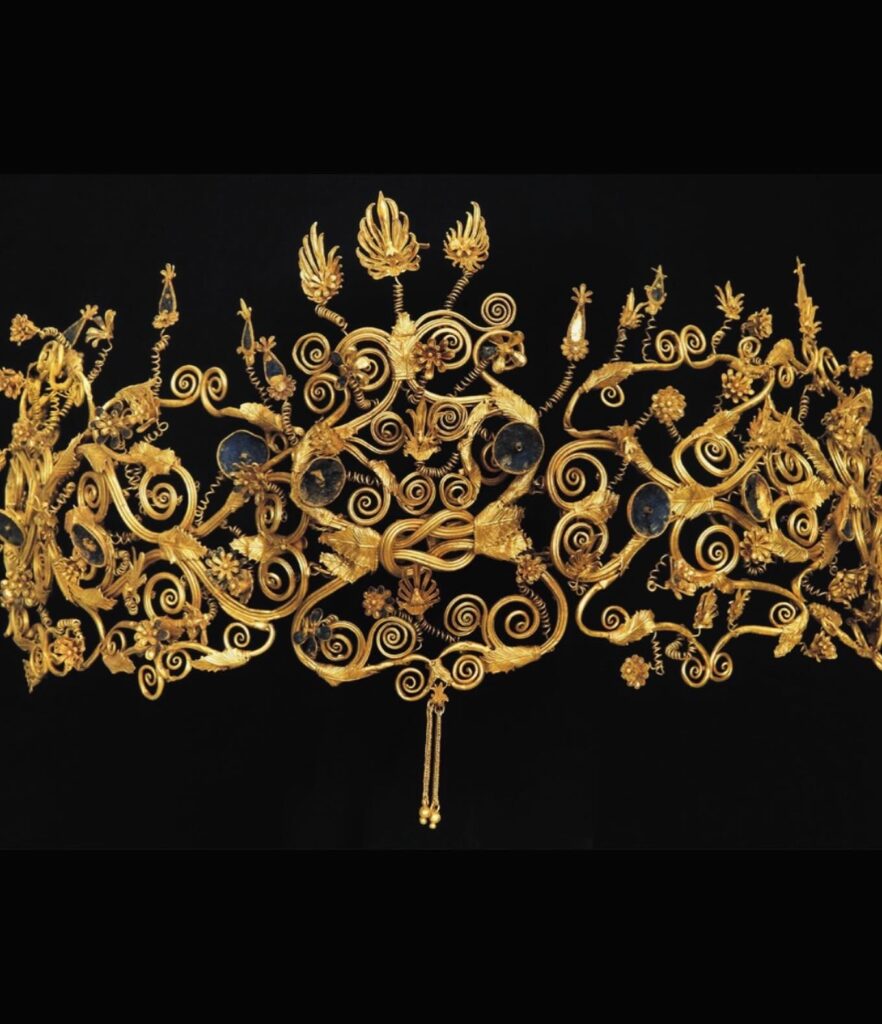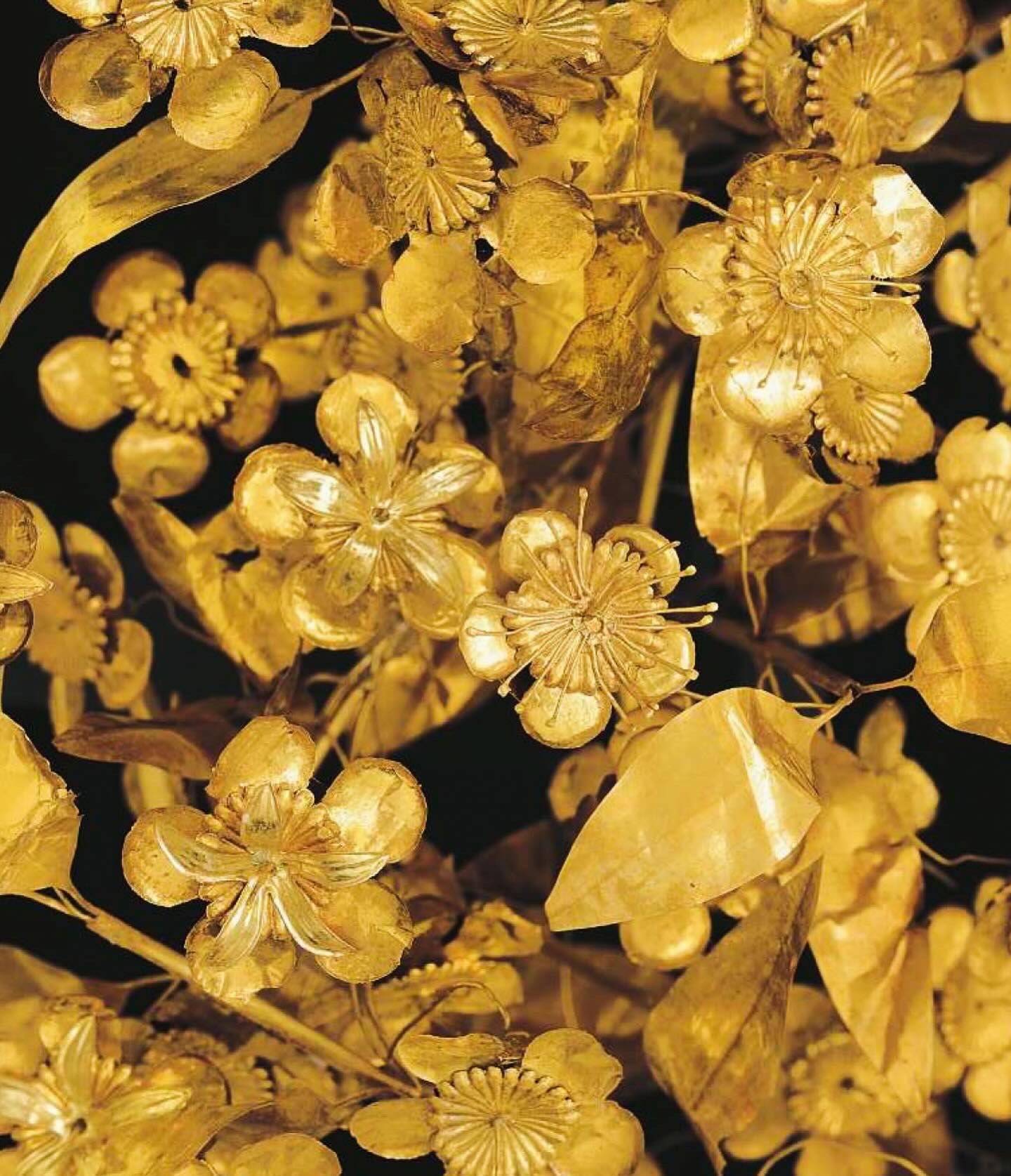Spring is starting to make itself felt in the Northern hemisphere, which has me thinking about two real masterpieces of late Classical gold-working, whimsy, and observed nature. These are two wreaths (metal ones that served as honorifics, fancy dress for feasting, and the funeral…that eternal festival) that were excavated within ‘Tomb II’ at Vergina.
Now who’s buried in whose tomb is a big subject, and one that would be fun to address in a different post. Suffice it to say that this tomb contained secondary cremations of two Macedonian royals, initially (romantically!) identified as the great Philip II and his Thracian bride Meda, who allegedly (romantically?) fell upon her husband’s funeral pyre to join him in death.



These wreaths (unlike the imposing oak one also found in the tomb) are associated with the woman’s burial. The myrtle one shown first is my favorite, with each leaf and in delicate gold foil, with stamens in the most delicate filaments of drawn wire – shivering and quivering at the slightest breath or nearby footfall. The second is perhaps more whimsical, with springy curlicue stems, crisp acanthus leaves, and even miniature bird and bee nestled in blossoms; it certainly was brushed by the flame of the funeral pyre, and some of the glass and enamel components have exploded and cracked as a result.
Myrtle (Greek myrtos), sacred to Aphrodite and Demeter, it seems to me, is the perfect symbol of spring and renewal – the tiny delicate blossoms emerging triumphantly from winter’s adversities.




